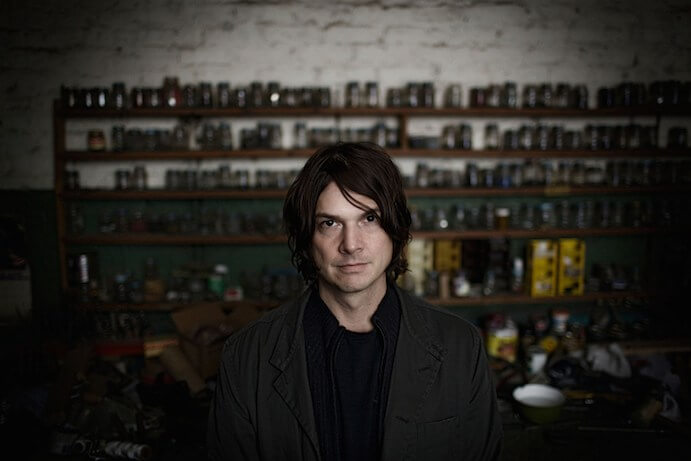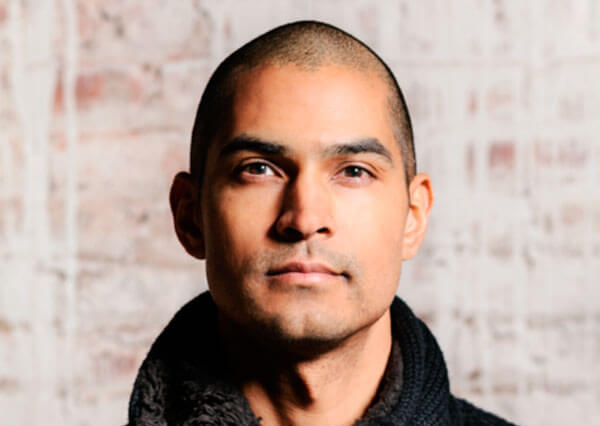“[Polystylistics] … creates new possibilities for the musico-dramatic embodiment of ‘eternal’ problems—war and peace, life and death.” Today, composer Alfred Schnittke’s 1971 endorsement of musical collage seems prophetic in its proposal that polystylisticism might address extra-musical issues. Indeed, rendering its thematic inspiration–the Colorado River–into a rich tapestry of tributary watershed routes and anecdotal, aural shadows of human habitation, The Colorado’s collaborative team simultaneously convey primordial environmental beauty, and the human overdevelopment that threatens it. However, the compositions by Glenn Kotche, Paola Prestini, Shara Nova, William Brittelle, and John Luther Adams–brought to life by ensemble Roomful of Teeth’s versatility in world-music traditions–are a mere component of larger ecological rhapsody. Multimedia production company VisionIntoArt has paired the eclectic auditory soundscape with a yet-released documentary film, to serve as a dynamic educational resource and cautionary tale for environmental advocates and audiophiles alike; nonetheless, in anticipation for the project’s completion, The Colorado album vividly spins, in disparate musical traditions, the plight of a natural wonder incapable of resisting human exploitation.
Glenn Kotche’s “Beginnings” and “Palette of a New Creation,” wordless musical impressions of virgin and injured lands, introduce and conclude The Colorado, respectively. Specters of Smetana’s Vltava and Mendelssohn’s Fingal’s Cave, 19th century tonal narratives of earthly waterways, reverberate in “Beginnings.” Roomful of Teeth’s call-and-response vocals follow the Colorado’s source in the Rocky Mountains in placid undulations of dynamics, matching the ebb and flow of the River, as it expands in tributary confluences. Kotche’s inventive percussive composition surface in plucked cello ostinati, joined gradually by a procession of glockenspiel and snare drum, and, most interestingly, rhythmic water-droplet “ploink” tones, presumably produced by the vocalists flicking their cheeks while widening their mouths. I imagine the percussive components illustrate the frustration of sediment as the Colorado carves its path through valleys and gorges. Conversely, “Palette of a New Creation” attends the labored arrival of the diminished River at its delta, thinned by human diversions and damn constructions. Sluggish vocals, punctuated by yelps and jarring rip glissandi animate brackish estuary waters, dehydrated by man-made interference.

Polystylistic references in Paola Prestini’s chapters, “A Padre, A Horse, A Telescope” and “El Corrido De Joe R.,” chronicle episodes of human habitation beside the Colorado River. Following Kotche’s “Beginnings,” “A Padre, A Horse, A Telescope” celebrates the curiosity of Italian 17th century Jesuit missionary Eusebio Kino—a veritable Renaissance man determined to prove the “Island of California” to be a peninsula, and whose agricultural knowledge brought economic growth to the indigenous peoples of Northern Mexico. Prestini applies an Italian Renaissance choral style, evocative of the 17th century Roman School of sacred music. Yet, the polyphonic texture one might expect from this citation is mingled with cellist Jeffrey Zeigler’s warm bass line drone, providing an earthy secularism to an otherwise papal-inspired piece. In “El Corrido De Joe R.,” The Colorado’s seventh track, Prestini weaves the tale of a promising immigrant athlete whose dreams of competing in the Olympics are impeded by his responsibility to tend to his malaria-stricken mother. In its subject content, the piece is faithful to the corrido’s historic narrative role of addressing topical social issues of rural Mexican communities. However, in its rhythmic and instrumentation references, Prestini’s work borrows medieval European bardic characteristics. Notably, a continuous lyre strumming introduces the monophonic vocal lines, the ABCB rhyme scheme of which is organized into four-line quatrains, a common ballad structure.

With “An Unknown Distance Yet to Run,” Shara Nova offers an auditory perspective on the eager ambitions of the Colorado River’s earliest explorers—a fervor echoed in farcical irony throughout the artist’s second contribution, “Welcome to the Anthropocene.” Positioned subsequent to Prestini’s tribute to Eusebio Kino, the former features rhythmic cello arpeggios that simulate the purposeful trampling of hooves, a device brought to life further by tambourine strikes suggesting a disturbance of loose earth upon hoof’s impact. The passionate exclamations of “We know not!” repeated throughout “An Unknown Distance Yet to Run” are insistently iterated through a vocoder in “Welcome to the Anthropocene,” Nova’s second entry, and The Colorado’s penultimate chapter. Combined with skittering echo and delay sound processing—an impression of the hoof-impact tambourine rhythm—and a spectral, perpetual drone hovering in the upper registers, these elements paint the surreal irony of ambition arrested.
At The Colorado’s center, works by William Brittelle and John Luther Adams present the sobering reality of an arid watershed landscape exhausted by human exploitation. Indeed, arranged subsequent to the album’s three introductory memorials detailing the River’s bounty and promise for discovery, Brittelle’s and Adam’s works describe a selfless “giver” perverted by human “takers” (à la The Giving Tree). Electroacoustic techniques in Brittelle’s “Shimmering Desert” echo and reverse-echo radio clips while distorting Roomful of Teeth’s sporadic nonsense yips and yaps into a hazy desert mirage. Percussive reverberations punctuate this surreal Lynchian landscape—one beyond recognition to that depicted earlier in the album.

The “unknown distance” that so enchanted Nova’s proxies earlier in The Colorado is answered in Brittelle’s “The Colossus,” with Roomful of Teeth voicing the thoughts of workers who witnessed fatalities throughout the Colorado River’s many construction projects. Words are sung in Berg-esque sprechgesang, in which pitches are given more loose, conversational articulation; however, the upbeat vocals convey a dismissive tone toward the lyrics. For instance, in response to female lines singing, “There’s a man killed over here,” male vocals in burlesque falsetto chime, “He won’t hurt nobody. Get back to work.” Though on the surface a bustling soundscape of buoyant voices, echoed cello lines, and 80s pop-inspired electronic percussion, “The Colossus” is starved for humanity.
Consequently, upon arrival to John Luther Adams’ “Cathedrals in the Desert,” we find a more desolate scene. Barren instrumentation of Roomful of Teeth’s nonsense syllables and matching xylophone activity, never accompanying each other, expose the façade of commotion in “The Colossus.” In dynamics, tempo, and register, there is an overall sense of descent—a paradox to the sky-high “cathedrals” built in the sand.
THE COLORADO from Murat Eyuboglu on Vimeo.
























